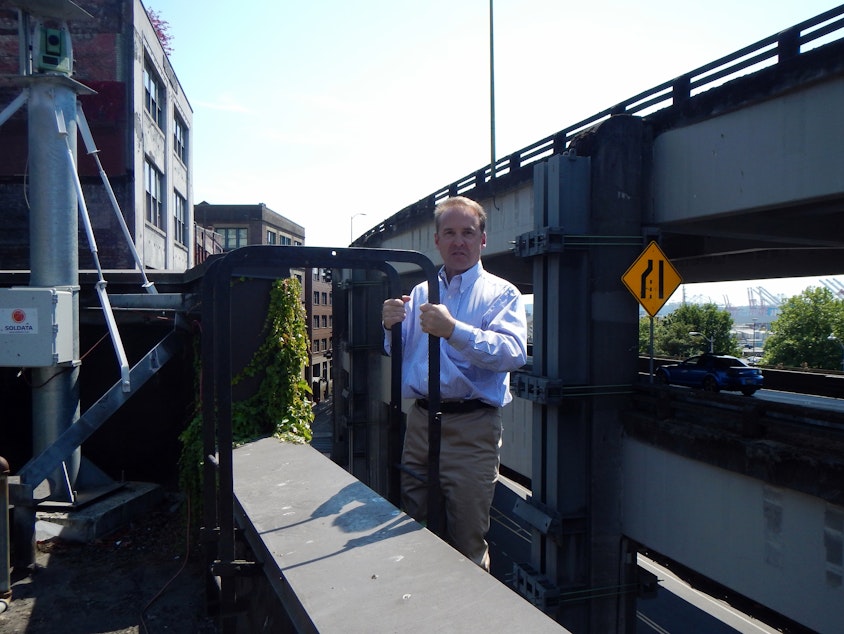Problems And Progress For Seattle's Waterfront Tunnel

The world’s largest tunneling machine started grinding into the soil beneath downtown Seattle Tuesday afternoon. The machine known as Bertha is digging a 58-foot-wide tunnel to replace the Alaskan Way Viaduct.
As it works its way north, it will come within a foot or two of the century-old One Yesler Way building, right next to the viaduct. A motion detector on the roof there uses a laser to see if the massive tunnel machine causes the surface, or the building above it, to move at all. It's part of a network of devices the tunnel contractors have put up all along the two-mile route.
"We’re hoping at least what we’re told, we won’t feel it, or feel it very little," said Brian Runberg, owner of One Yesler Way.
His building has already suffered some damage from work getting the ground ready for Bertha. Mortar has fallen from its brick walls onto the sidewalk and onto desks at Runberg’s architecture firm. "We did have a sewer line that broke, which seems to have come from the soil movement as well," Runberg said.
Runberg’s isn’t the only sewer line damaged by the tunnel work.
As Publicola first reported last week, early underground work on the tunnel has caused sewage spills and damage to water mains.
Last week Seattle Public Utilities said that workers with the Washington State Department of Transportation's tunnel contractor, Seattle Tunnel Partners, had drilled through a live power vault but were fortunate to miss hitting the power lines contained inside. A power vault is a concrete structure that houses equipment such as underground transformers, connectors and power lines.
Seattle Public Utilities, Seattle City Light and the Port of Seattle have all clashed with Seattle Tunnel Partners. That’s according to an internal email from Ray Hoffman, the head of Seattle Public Utilities.
Replacing the viaduct is expected to cost a total of $3 billion and is scheduled to be done in 2019.
July 23 email from the head of Seattle Public Utilities to Ethan Raup, Seattle Mayor Mike McGinn's Director of Policy and Operations:
Correction 8/1/13: A previous version of this story stated that the tunnel contractor had drilled through a power line but missed hitting live wires. In fact, the tunnel contractor drilled through a concrete power vault and it missed hitting the power lines inside.

